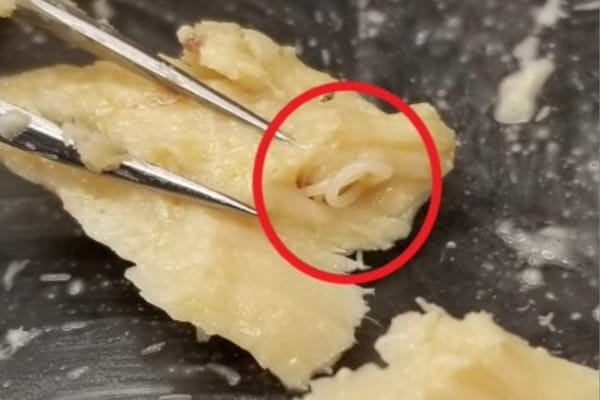40 years after its expiration date, scientists have made an interesting discovery in this salmon.
What happens to food when it is stored for decades? While the experiment had already been conducted with a burger, the test was repeated with canned fish, according to a study published in Ecology and EvolutionThe latter dated from the late 1970s. The boxes had been set aside in a quality control process and were later used to study the marine ecosystem.
It was salmon, but decades later, it was mainly worms that were found. Perfectly preserved, they were of particular interest to scientists. These marine parasites, anisakidaeare actually harmless to humans when killed during the canning or cooking process. However, they can cause food poisoning when ingested alive in raw fish, for example.
While the presence of worms may not seem like a good sign, it is not a bad sign of the quality of the fish, quite the contrary. According to Natalie Mastick and Chelsea Wood of the University of Washington, who conducted the experiment, their presence should be taken as “a signal that the fish on your plate comes from a healthy ecosystem.” These worms are found in salmon naturally, simply by following the food chain. They are eaten by small crustaceans, which are then swallowed by larger species, such as salmon.
The cans contained four different species of salmon from the Gulf of Alaska and Bristol Bay over a 42-year period (1979-2021). The worms did not evolve in the same way depending on the salmon species. Keta salmon, also called Pacific salmon, and pink salmon saw their number of worms increase over time, while in red and coho salmon, also called silver salmon, the quantities remained more stable. Scientists are struggling to explain this difference and it calls for further expertise.
Studying these preserves opens up great possibilities for researchers to study marine ecosystems. They no longer need to collect live specimens or search for historical documents. They have transformed old dusty boxes into veritable ecological archives, a process that could thus be reproduced.
